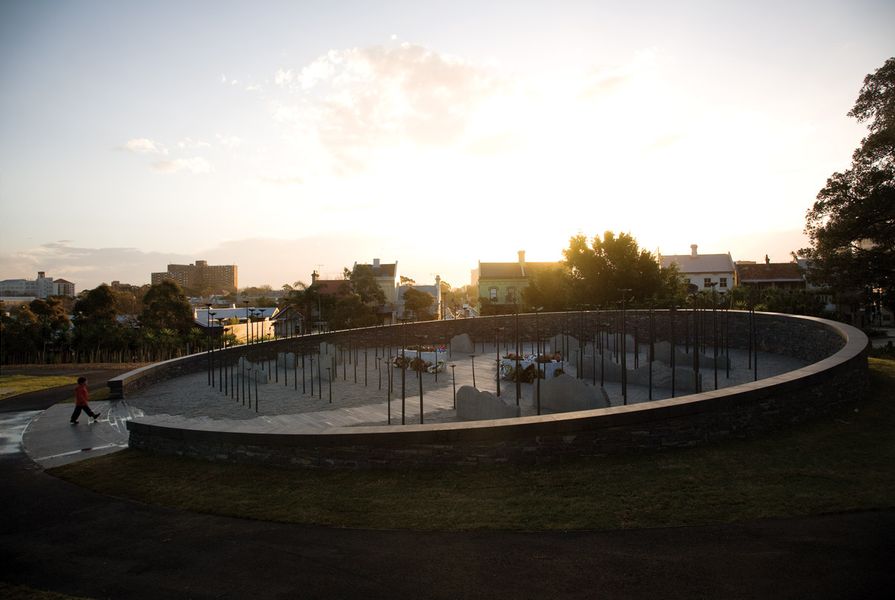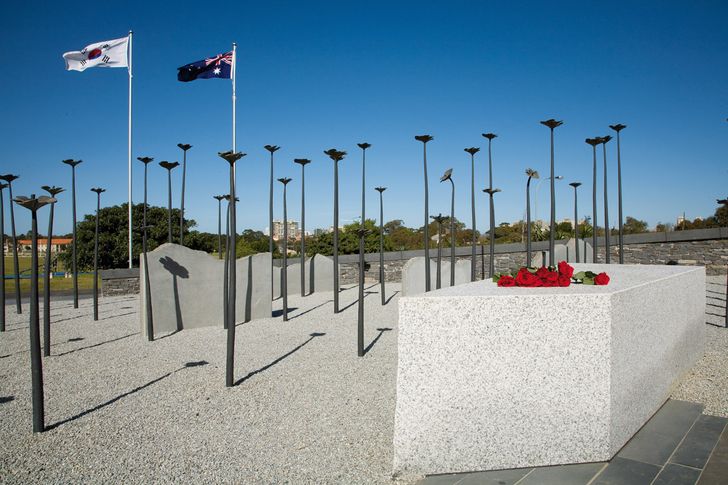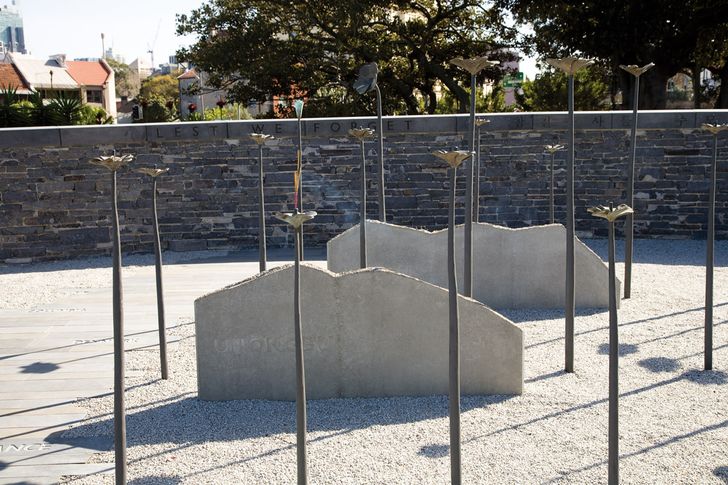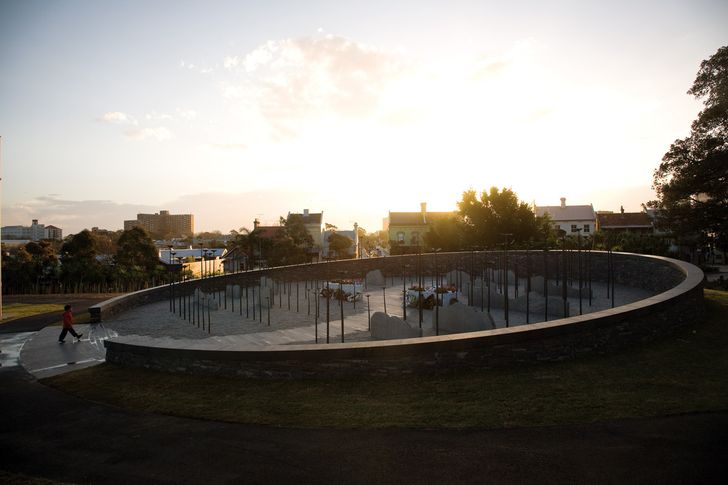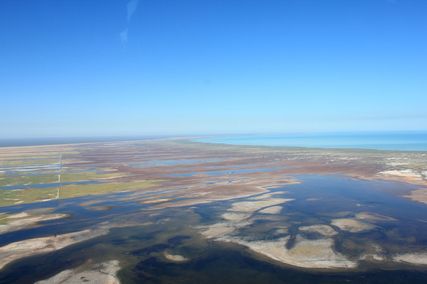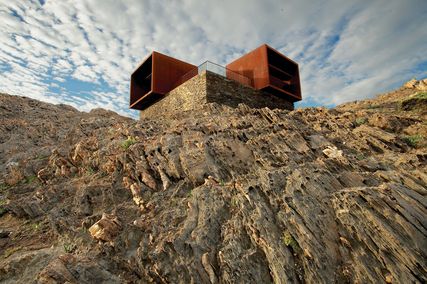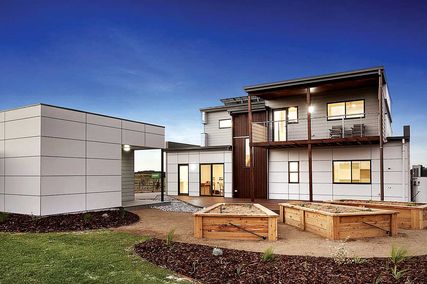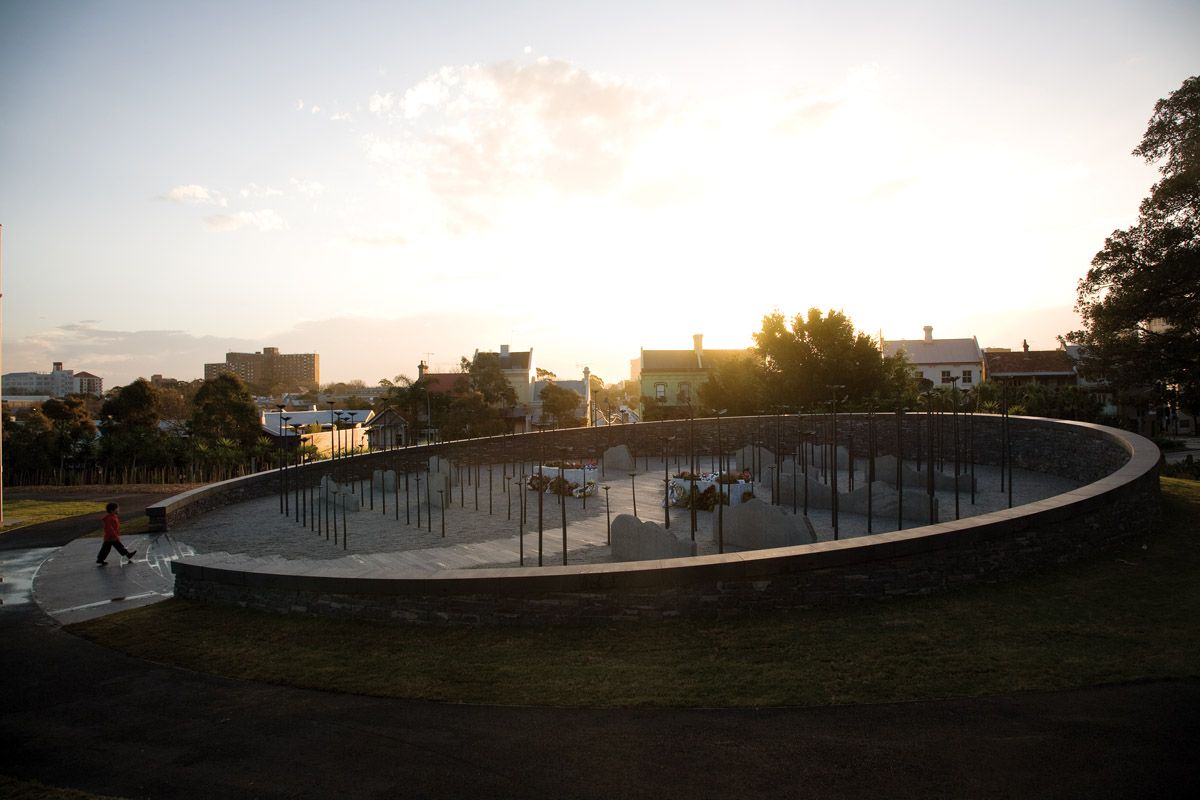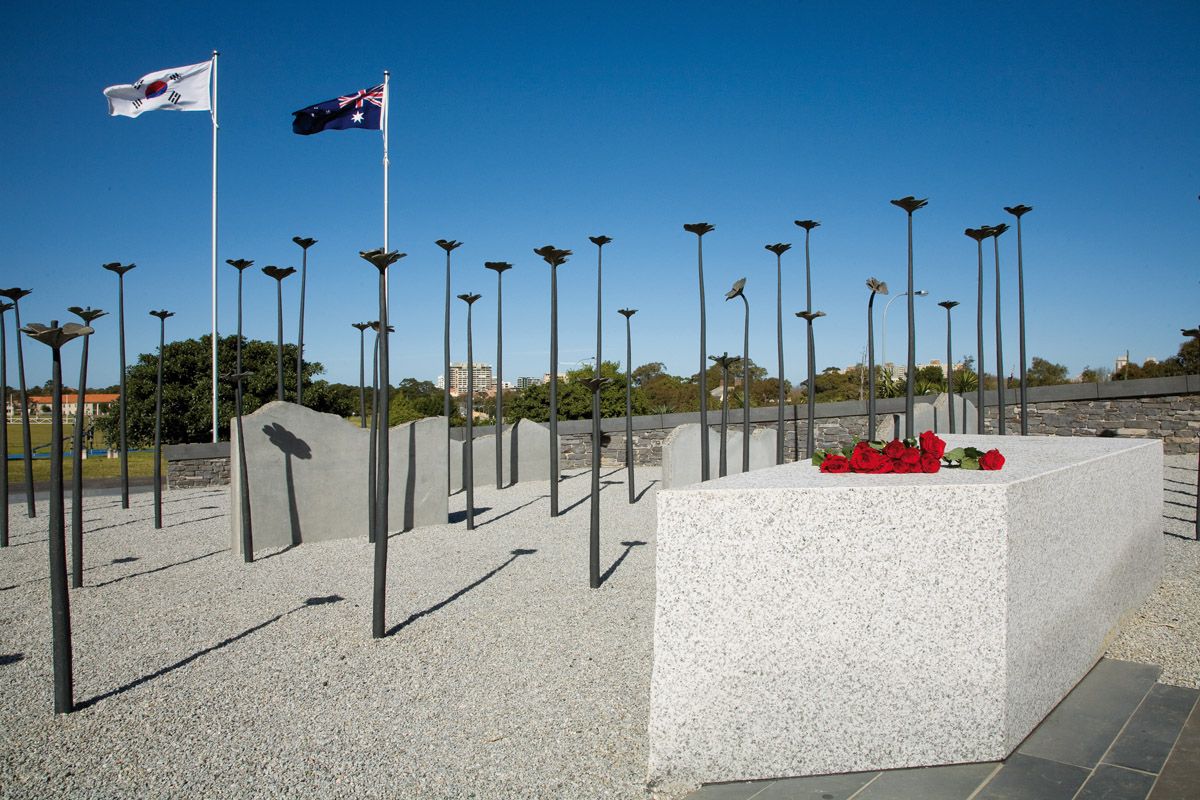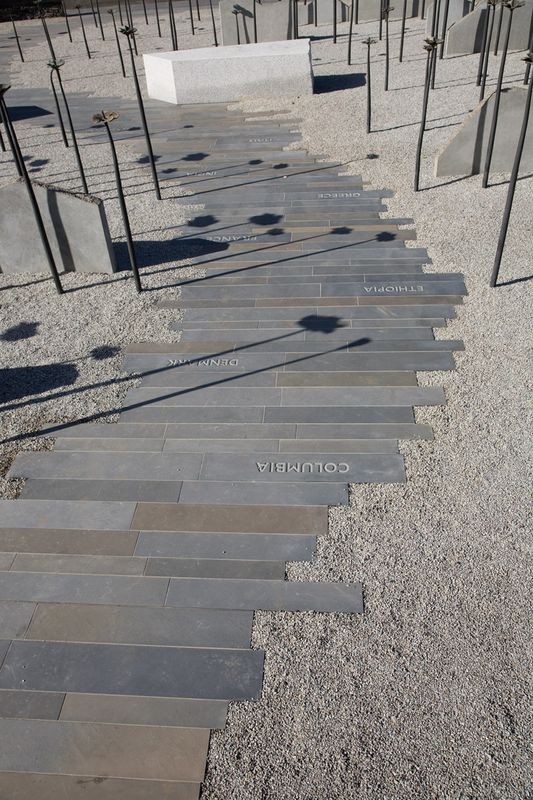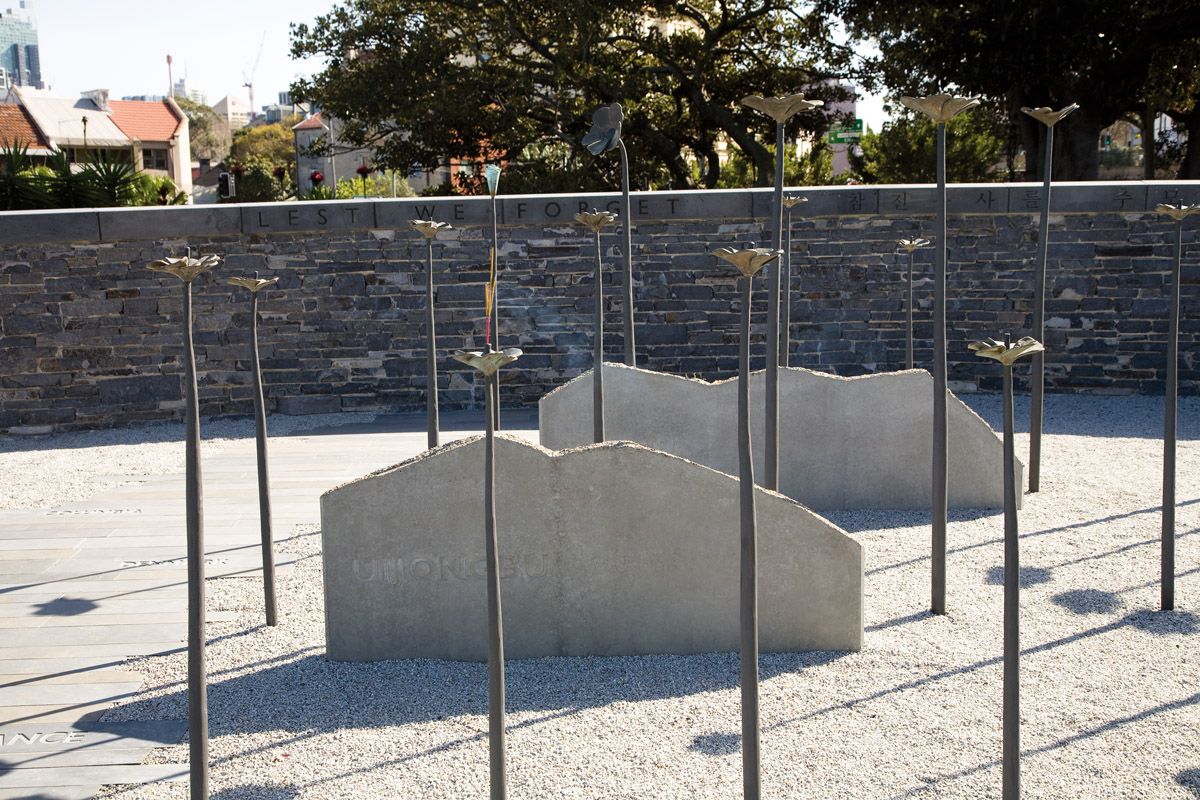Within the undulating terrain of Moore Park in Sydney’s eastern suburbs, the Korean War Memorial provides a long-awaited tribute to those who served in the 1950-1953 conflict. Historically overshadowed by World War II and the Vietnam War, the Korean War has come to be known as “The Forgotten War.”
The recently dedicated memorial is the result of a limited competition organized by the NSW Government Architect’s Office. “This is the first official Korean War Memorial in New South Wales,” explains artist Jane Cavanough, who designed the winning proposal in association with Pod Landscape Architecture. “The veterans were becoming very anxious about not having this recognition because it has been over fifty years since the war.”
The memorial design draws on the central feature of the South Korean flag, a symbol known in Korean as the taegeuk. Based on the Taoist concept of Yin and Yang, the taegeuk balances the opposing principles of eum (earth) and yang (heaven) as part of a greater whole. This notion of interdependent opposites provided the conceptual basis of the design. “That line between balance and imbalance, chaos and order, symbolized to us the struggle of the Korean peninsula,” says Cavanough.
Forged by Glenn Moon, the 136 steel and bronze flowers are based on the Rose of Sharon.
Image: Karl Sharp
The taegeuk is physically manifested in the circular form of the memorial, which sits neatly within a ring of existing pathways at the eastern edge of the park. The site was clearly outlined in the competition brief and chosen for its proximity to the commemorative Anzac Parade roadway and the historic Victoria Barracks. However, these military associations are not immediately clear when visiting the park and many might question the appropriateness of locating a memorial next to a major roadway.
The design overcomes these challenges by turning its back on the surrounding streets and integrating into its parkland setting. Rather than dominating the landscape, the memorial appears to grow out of it. “Fitting it into an established park was a big factor,” explains Steven Hammond from Pod Landscape Architecture. “We were trying to create a little garden within the park.”
A grassed mound rises up to meet the outer wall of the memorial, providing visual and acoustic privacy from the nearby traffic intersection. The circular wall forms a protective barrier that separates the open expanse of the park from the more intimate, contemplative space within. Composed of interlocking stone blocks, the gently sloping wall represents the strength of the combined forces that served in Korea.
Concrete mounds are inscribed with the names of the eleven battles where australian troops received honours.
Image: Karl Sharp
The Korean War marked the first time a multinational force was assembled under United Nations command, and it included 17,000 Australian troops, 358 of whom died. The names of all twenty-one countries contributing to the UN force are commemorated in a Memorial Pathway that follows the undulating line of the taegeuk through the centre of the memorial. In the middle of the path lie two granite stones quarried from Kapyong, the site of one of the major battles. The split stones represent the two halves of the Korean peninsula and together form the sacred heart of the memorial.
Standing to attention on either side of the winding path, orderly rows of forged steel and bronze flowers represent the 136 troops from NSW who lost their lives in the conflict. The flowers are based on the Rose of Sharon, the national flower of South Korea. “It is also a symbol which can be read in our terms as the poppy,” says Cavanough. “It has that remembrance connection to begin with.” The flowers were individually forged by blacksmith Glenn Moon, with whom Cavanough has previously collaborated. Over time the bronze petals will develop a green patina, symbolizing the regeneration that follows the destruction of war.
Concrete battle mounds run in horizontal lines across the memorial, their jagged profiles representing the mountainous landscape of the Korean peninsula. The blades are inscribed with the names of the eleven battles in which Australians received battle honours. Visitors can move between the rows of concrete to pay their respects at particular battle mounds, much as mourners visit headstones in a cemetery.
The memorial’s shape draws inspiration from the Taegeuk, which is featured on the South Korean flag.
Image: Karl Sharp
The muted grey tones of the concrete, steel and granite reflect the cold climate and harsh terrain in which the conflict was fought. This austerity is offset by the rough texture of the stone wall and the crafted feel of the flowers, which infuse the memorial with a comforting sense of human touch. “We tried to choose materials that felt hand-hewn,” says Hammond. “The memorial has a garden feel to it. It has that sense of darkness but it has some warmth as well.”
The Korean War Memorial represents a welcome departure from the heroic monumentality of traditional Australian war memorials. It draws on its parkland setting to create a commemorative garden that honours both the Australian and Korean war troops who served, suffered and died in the pursuit of peace. Much like the taegeuk, the Korean War Memorial balances the tragedy of war with the hope of regeneration.
Credits
- Project
- Korean War Memorial
- Landscape architect
- Pod Landscape Architecture
Newtown, Sydney, NSW, Australia
- Consultants
-
Arborist
Urban Forestry
Artist Jane Cavanough Artlandish and Design
Blacksmith Spring & Hammer - Glenn Moon
Concrete Sydney Precast
Conservation International Conservation Services
Contractor Design Landscapes
Engineer SDA Structures
Stormwater and flood management Whipps Wood Consulting
- Site Details
-
Location
Moore Park,
Sydney,
NSW,
Australia
- Project Details
-
Status
Built
Category Landscape / urban
Type Culture / arts
- Client
-
Client name
Centennial and Moore Park Trust
Website centennialparklands.com.au
Source
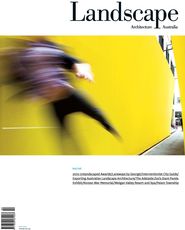
Report
Published online: 1 May 2010
Words:
Natalie Ward
Images:
Karl Sharp
Issue
Landscape Architecture Australia, May 2010

